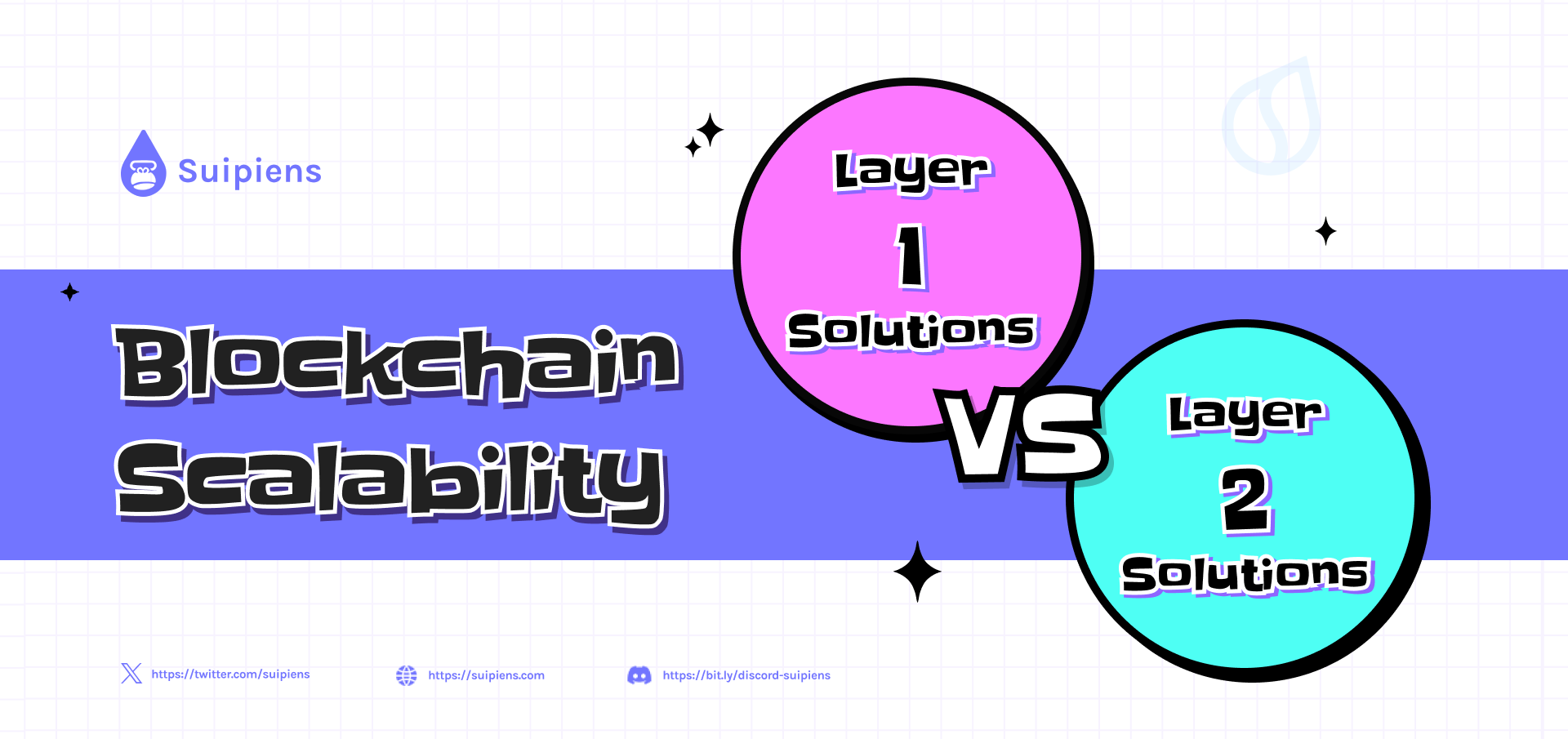Blockchain Scalability: Layer 1 vs. Layer 2 Solutions

Discover how Layer 1 and Layer 2 solutions tackle the blockchain trilemma, paving the way for scalable crypto ecosystems.
Introduction
Blockchain technology has revolutionized the world of finance and decentralized applications (DApps). However, it faces a crucial challenge known as the "Blockchain Trilemma." This trilemma consists of three essential attributes: Decentralization, Security, and Scalability. Unfortunately, it's a bit of "boiling the ocean", as a blockchain can only excel in two of these areas at the expense of the third. In this article, we'll explore how this trilemma affects various blockchains and delve into the world of Layer 1 and Layer 2 scaling solutions.
The Blockchain Trilemma
Decentralization, Security, and Scalability are the three pillars of the Blockchain Trilemma.
- Decentralization: This entails distributing computing power and consensus throughout a network.
- Security: It involves safeguarding the network against malicious actors and potential attacks.
- Scalability: This refers to a blockchain's capacity to handle a high volume of transactions efficiently.
Achieving a perfect balance among these three attributes is challenging. Typically, a blockchain can excel in two areas but must compromise on the third.
Examples of the Blockchain Trilemma
To understand the trilemma better, let's examine two prominent blockchain examples:
- Ethereum: Ethereum is decentralized and highly secure, with over 561,000 validators. However, it faces scalability issues, leading to high network fees during periods of heavy activity.
- Binance Smart Chain (BNB Chain): BNB Chain sacrifices decentralization, with only 21 validators, to achieve impressive security and scalability.
Layer 1 Blockchains
Layer 1s are the foundation upon which other blockchains and DApps are built. They directly process blockchain transactions and operations. To enhance scalability, Layer 1 blockchains need to make direct changes to their code or architecture. Some examples of Layer 1s include Ethereum, Binance Smart Chain, and Sui.
Layer 1 Scaling Solutions
Several methods improve Layer 1 scalability:
- Consensus Mechanism: Different blockchains use varying consensus mechanisms. Ethereum transitioned from proof-of-work (PoW) to proof-of-stake (PoS) to increase transaction speed while maintaining security and decentralization.
- Chain Fork: Forking a blockchain, either as a soft fork or hard fork, can enhance performance.
- Sharding: This experimental technique divides transactions into smaller "shards" processed in parallel, significantly boosting speed.
Layer 2 Blockchains
Layer 2s enhance blockchain scalability by operating atop Layer 1. They handle transactions off-chain, reducing congestion and improving scalability. Prominent Layer 2s include Polygon, Optimism, Arbitrum, zkSync, and Bitcoin's Lightning Network.
Layer 2 Scaling Solutions
Here are some Layer 2 scaling solutions:
- Nested Blockchain: Nested chains have parent and child chains. Child chains process transactions and relay outcomes to the parent chain, reducing the main chain's workload. The OMG Plasma Project serves as a Layer 2 blockchain for Ethereum.
- State Channels: State channels facilitate off-chain transactions, enhancing speed and throughput. The Raiden Network on Ethereum and the Lightning Network on Bitcoin are examples of state channels.
- Sidechains: These separate blockchain networks coexist with Layer 1 to enhance speed and scalability. They have their validators and consensus mechanisms. Assets are locked and checked for irregularities between the mainchain and sidechain.
- Rollups: Rollups bundle Layer 1 transactions, process them off-chain, and return them to the main chain. They come in two types: Optimistic Rollups and Zero-Knowledge Rollups, both enhancing transaction throughput and reducing fees.
Limitations of Layer 1 and Layer 2
Blockchain layering offers a range of advantages, each tailored to specific needs. Layer 1 solutions, for example, shine in their seamless integration with existing architectures. They bring about fundamental changes at the base layer, sparing developers from additional tweaks. In contrast, Layer 2 scaling solutions, while supercharging transaction capabilities, do so without disrupting the core layer's protocol. They facilitate numerous microtransactions, all without imposing exorbitant transaction fees or subjecting users to the delays associated with miner verifications. However, it's vital to acknowledge that both these blockchain layers grapple with their own set of constraints.
One significant hurdle lies in the integration of these layers into established protocols. Consider the mammoth market caps of behemoths like Bitcoin and Ethereum, each boasting billions in valuation. Daily trade volumes in the millions of dollars underscore the critical importance of keeping processes streamlined and efficient. Therefore, the prospect of introducing complexity through unnecessary coding and experimentation is a costly and dubious endeavor that demands careful consideration.
The Future Beyond Layer 1 and Layer 2
The current state of the blockchain industry faces significant hurdles when it comes to achieving widespread adoption, and scalability is undeniably a key impediment. As the appetite for cryptocurrencies continues to surge, the urgency to address scalability issues within blockchain protocols becomes increasingly apparent. However, the challenge lies in the fact that both underlying layers of blockchain technology possess inherent limitations. Consequently, the path forward appears to entail the development of a revolutionary protocol that can effectively confront the intricate "scalability trilemma" and propel the industry towards mass adoption.
Conclusion
Blockchain technology has come a long way in addressing the Blockchain Trilemma through Layer 1 and Layer 2 solutions. However, the future of blockchain scalability is still in development. Whether Layer 2 scaling will be a temporary fix or a long-term solution remains a pressing question in the blockchain industry. As demand for cryptocurrencies grows, the quest for scalable blockchain protocols continues.
Be sure to check out Suipiens' website and social media channels to stay up-to-date on all things about Sui Blockchain!

